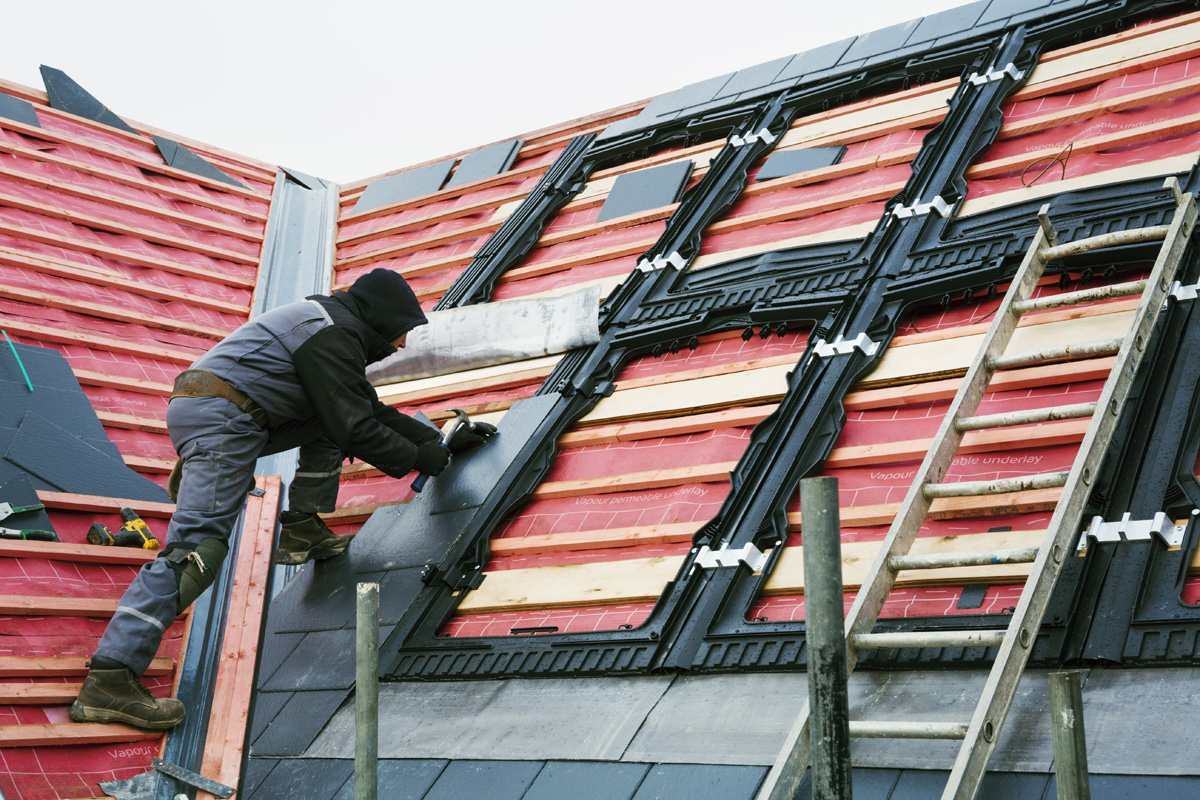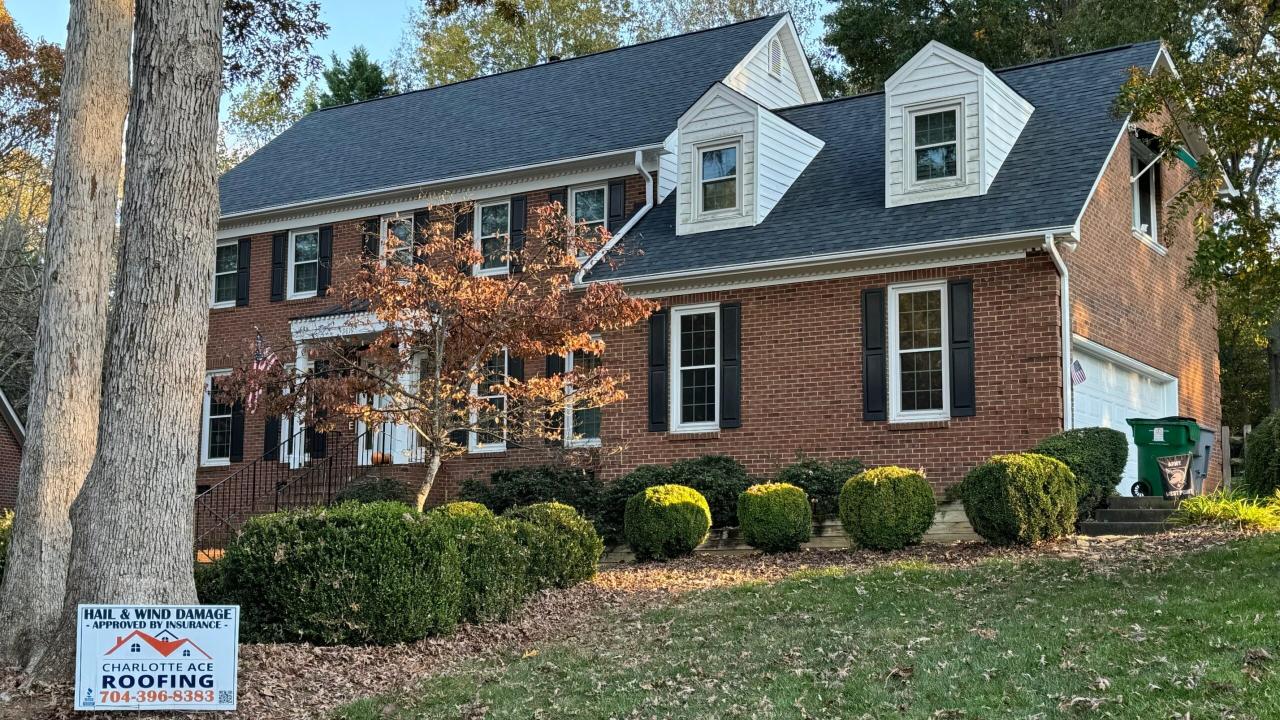Roofing companies play a pivotal role in safeguarding our homes and businesses, offering a plethora of services tailored to meet diverse needs. From residential roofing to commercial projects, the distinction in approach and materials can significantly impact the longevity and effectiveness of a roof. Moreover, with the rising awareness of sustainability, understanding the latest innovations and environmental considerations in roofing is more crucial than ever.
This guide delves into the various roofing services available, the critical factors to consider when selecting a roofing company, and the materials and innovations shaping the industry. By shedding light on the roofing process, including the importance of inspections, maintenance, and clear communication with contractors, we aim to equip you with the knowledge needed to make informed decisions.
Types of Roofing Services

Roofing companies offer a diverse range of services tailored to meet the specific needs of their clients. Understanding the various roofing options is essential for both homeowners and business owners to ensure the longevity, safety, and efficiency of their roofs. This information is particularly significant as different types of roofing materials and structures require bespoke care and maintenance.
Residential and Commercial Roofing Options
The distinction between residential and commercial roofing is fundamental in the roofing industry. Each category entails unique requirements, materials, and installation processes, reflecting the different uses and architectural styles inherent to residential and commercial properties. Residential roofing typically involves sloped roofs designed to accommodate various aesthetic styles, while commercial roofing often features flat or low-slope designs.
Residential roofing services include:
- Asphalt Shingle Installation: A predominant choice for homes due to affordability and versatility.
- Tile Roofing: Offers durability and a distinctive aesthetic, commonly seen in Mediterranean-style houses.
- Metal Roofing: Gaining popularity for its longevity and resistance to harsh weather conditions.
- Flat Roofing Systems: Used in modern home designs, these require specific maintenance to prevent pooling.
In contrast, commercial roofing services encompass:
- EPDM (Ethylene Propylene Diene Monomer): A durable synthetic rubber commonly used in flat roofs.
- TPO (Thermoplastic Olefin): Known for its energy efficiency and cost-effectiveness, popular among commercial buildings.
- Built-Up Roofing (BUR): An older solution composed of multiple layers, providing excellent waterproofing.
- Modified Bitumen: A hybrid system combining asphalt with a rubber-like material, especially suited for roofs needing enhanced durability.
Importance of Roof Inspections and Maintenance Programs
Regular roof inspections and maintenance are paramount to extending the life of any roofing system. They help identify potential issues before they escalate into costly repairs or replacements. A well-structured maintenance program can significantly mitigate risks associated with leaks, structural damage, and energy inefficiency.
Key aspects of a roof inspection program include:
- Visual Assessment: Regular checks for visible signs of wear, such as cracked shingles or rusted flashings.
- Debris Removal: Clearing gutters and roofs of debris to prevent blockages and water damage.
- Sealant Checks: Ensuring that all sealants remain intact to prevent leaks.
- Flashing Integrity: Inspecting metal flashings around chimneys, vents, and skylights for rust or damage.
“An ounce of prevention is worth a pound of cure.” – Benjamin Franklin
Establishing a thorough maintenance schedule with a qualified roofing company can save significant costs in the long run while ensuring that both residential and commercial roofs remain functional and aesthetically pleasing.
Selecting a Roofing Company

Choosing the right roofing company is paramount for ensuring that your roofing project is executed to the highest standards. A poorly installed roof can lead to a plethora of problems down the line, including leaks and structural damage, making the selection process critical. This guide will delve into essential factors to consider, helping you make an informed choice when hiring a roofing contractor.
Key Factors in Choosing a Roofing Company
When embarking on the quest to find a roofing contractor, several key factors warrant consideration. Understanding these factors can significantly influence the quality of work and the overall experience. Here are pivotal aspects to take into account:
- Experience and Expertise: Select a contractor with substantial experience and a solid track record in the roofing industry. This experience often translates into a higher quality of workmanship.
- Reputation: Investigate the contractor’s reputation through reviews and ratings from previous clients. A well-regarded company is likely to provide reliable service and quality results.
- Warranty and Guarantees: A reputable roofing company should offer warranties on both materials and workmanship, providing peace of mind regarding the longevity of your roof.
- Pricing: Obtain detailed written estimates from several contractors. Analyse what is included in the quoted price to ensure you are comparing like-for-like services.
Checklist for Evaluating Roofing Contractors
Using a checklist can streamline your evaluation process, ensuring that no important criteria are overlooked. Below is a comprehensive checklist that should guide your assessment:
- Verify the company’s licensing and insurance status.
- Request and review references from past projects.
- Check for any industry affiliations or certifications.
- Assess the contractor’s safety record and practices.
- Inquire about the estimated timeline for project completion.
Importance of Licenses, Insurance, and References, Roofing companies
Ensuring that a roofing contractor is licensed and insured is not merely advisable, but essential. A valid licence indicates that the contractor adheres to local regulations and industry standards. Similarly, comprehensive insurance protects you from potential liabilities during the project.
Moreover, references provide insight into the contractor’s reliability and quality of work. Speaking to previous clients about their experiences can unearth valuable information regarding the contractor’s professionalism and the durability of their work.
“Choosing a licensed and insured contractor not only safeguards your investment but also assures you of their commitment to quality.”
Roofing Materials and Innovations: Roofing Companies

The selection of roofing materials plays a crucial role in defining the longevity, aesthetics, and efficiency of a building. Various options are available, each offering unique benefits tailored to different needs and climates. This overview delves into popular roofing materials and the latest advancements in roofing technologies that are shaping the industry.
Popular Roofing Materials and Their Benefits
The choice of roofing material significantly influences the performance and sustainability of a property. Here are some widely adopted roofing materials along with their advantages:
- Asphalt Shingles: Known for their cost-effectiveness and ease of installation, asphalt shingles are the most commonly used roofing material. They come in a variety of colours and styles, allowing for aesthetic versatility.
- Metal Roofing: Metal roofs are renowned for their durability and longevity, often lasting over 50 years. They are resistant to harsh weather conditions and can reflect solar heat, improving energy efficiency.
- Clay Tiles: Offering exceptional durability and a distinct appearance, clay tiles are fire-resistant and can withstand extreme weather. Their natural colour also helps to maintain a cooler building temperature.
- Slate: This natural stone material is prized for its beauty and longevity. Slate roofs can last over a century and are impervious to fire, insects, and rot.
- Green Roofs: Incorporating vegetation into roofing systems, green roofs provide excellent insulation and can manage stormwater runoff, thus enhancing biodiversity.
Recent Innovations in Roofing Technology and Materials
The roofing industry is experiencing a wave of innovations that enhance both functionality and sustainability. Noteworthy advancements include:
- Solar Roof Tiles: These integrate solar technology with traditional roofing materials, allowing homeowners to generate electricity while maintaining the aesthetic appeal of their roofs.
- Cool Roofing Materials: Designed to reflect more sunlight, cool roofs significantly reduce heat absorption, which can lower energy costs and improve indoor comfort levels.
- Recycled Roofing Materials: Innovations in the use of recycled materials, such as rubber from tyres or plastic waste, are becoming more prevalent, promoting sustainability in roofing practices.
- Smart Roofing Systems: These incorporate sensors to monitor roof conditions, alerting property owners to necessary maintenance or potential issues, which can prevent costly repairs.
Environmental Impact of Different Roofing Options
The environmental effects of roofing materials can vary widely, influencing both energy consumption and resource management. Consider the following aspects:
- Energy Efficiency: Roofing materials that offer high solar reflectance can significantly reduce the heat island effect in urban areas, leading to lower energy consumption for cooling.
- Recyclability: Materials such as metal and certain types of shingles can be recycled at the end of their life cycle, reducing landfill waste and conserving resources.
- Life Cycle Assessment: Evaluating the entire life cycle of roofing materials—from production to disposal—enables better choices that minimise environmental footprints.
“Choosing the right roofing material not only enhances the aesthetic of a building but also plays a significant role in energy efficiency and environmental sustainability.”
The Roofing Process
The roofing process encompasses various stages that ensure a durable and efficient roof installation. Each step is crucial to achieving a successful roofing project, from initial assessment to the final touches. Understanding this process can help homeowners appreciate the intricacies involved and foster better communication with their roofing contractors.
The typical roofing project can be broken down into several key stages that detail the workflow from start to finish. Each phase requires careful planning and execution to guarantee quality and safety.
Initial Assessment and Planning
This phase involves a thorough inspection of the existing roof to identify issues and determine the necessary work. Accurate measurements and assessments are essential for proper planning. During this stage, the following steps are typically taken:
- Inspection of existing materials and structures for damage or wear.
- Measurement of the roof’s dimensions to calculate material requirements.
- Discussion of design preferences and budget with the homeowner.
- Obtaining necessary permits and approvals from local authorities.
Preparation of the Worksite
Proper site preparation is critical to ensure safety and efficiency throughout the roofing process. This includes the following actions:
- Clearing the area around the house of debris and obstructions.
- Setting up scaffolding or ladders for safe access to the roof.
- Protecting landscaping and outdoor features with tarps and barriers.
- Establishing a safe zone for tools and materials to minimise hazards.
Removal of Existing Roof Materials
In many cases, the existing roof must be removed before the new materials can be installed. This step may involve:
- Carefully extracting old shingles, tiles, or other roofing materials.
- Inspecting the underlying structure for any signs of damage or decay.
- Clearing away debris to prepare for the new installation.
“The integrity of the roof structure is paramount; any underlying issues must be addressed prior to installation.”
Installation of New Roofing Material
The installation process is where the new roofing materials are fitted. This stage includes:
- Applying underlayment to provide additional moisture protection.
- Carefully laying the chosen roofing materials, ensuring proper alignment and overlaps.
- Utilising appropriate fastening methods to enhance durability.
- Incorporating ventilation systems, if applicable, to prevent moisture buildup.
Safety Measures and Best Practices
Safety is of utmost importance during the roofing installation process. Adhering to best practices not only protects the workers but also the property and its occupants. Key safety measures include:
- Using personal protective equipment (PPE) such as helmets, harnesses, and non-slip footwear.
- Ensuring tools and materials are secured and organised to prevent accidents.
- Implementing fall protection systems to safeguard against falls from heights.
- Conducting regular safety briefings to ensure all team members are aware of protocols.
Communication Between Homeowners and Contractors
Effective communication is essential throughout the roofing project. This dialogue ensures that both parties are aligned, minimizing misunderstandings and enhancing satisfaction. Important aspects of communication include:
- Regular updates on progress and any potential issues that arise.
- Open discussions about changes in design or material selections.
- Clarifying timelines and expected completion dates to manage expectations.
- Providing feedback mechanisms for homeowners to express concerns or ask questions.
“Clear and consistent communication fosters trust and ensures a smooth roofing experience.”
Individuals exposed to asbestos may experience a range of symptoms, which can vary in severity. Early signs often include a persistent cough and shortness of breath, pointing towards potential complications. For a comprehensive understanding of these effects, it’s essential to explore the detailed information on asbestos exposure symptoms.
Among the many materials containing asbestos, asbestos tiles pose significant health risks, particularly when damaged. These tiles were commonly used due to their durability and resistance to fire, but their presence can lead to serious respiratory issues if the fibres become airborne. Awareness and caution are key when dealing with older buildings that may contain such materials.